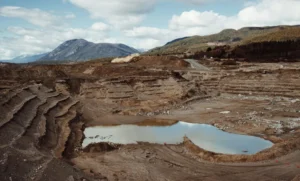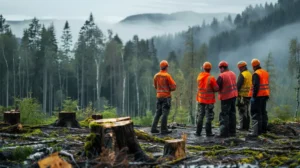The Amazon Rainforest is home to the largest collection of species on Earth, making Brazil a global biodiversity leader. Often referred to as the “lungs of the Earth,” this vast ecosystem is crucial in absorbing carbon dioxide and producing oxygen.
Brazil’s biodiversity is incomparable, and this article will look into why Brazil tops the list of the world’s most biodiverse countries while providing an overview of other nations with remarkable biodiversity.
Defining Biodiversity and Its Impact
Biodiversity refers to the variety of life in all its forms—plants, animals, microorganisms, and ecosystems. It is commonly measured by species richness, genetic diversity, and ecosystem diversity.
High biodiversity is critical for ecological balance, making sure that ecosystems can provide food security, regulate the climate, and support human life. A diverse environment helps ecosystems resist changes caused by natural or human disruptions.
Brazil: The Global Leader in Biodiversity

Brazil holds the highest biodiversity density in the world due to its geographic range and huge natural landscapes. Key ecosystems include:
- Amazon Rainforest: Spanning 5.5 million square kilometers, the Amazon holds the huge variety of species.
- Atlantic Forest: Though heavily divided, this natural zone contains a big number of endemic species.
- Pantanal: The world’s largest tropical wetland, rich in wildlife.
- Cerrado: Brazil’s vast savanna, hosting a surprising variety of species.
Among its iconic animals are jaguars, macaws, anacondas, and the majestic harpy eagle. Brazil is home to around 55,000 plant species, over 1,800 bird species, and countless mammals, reptiles, and amphibians.
Brazil’s Conservation Efforts
Brazil’s Amazon rainforest is the largest in the world, covering approximately 60% of the country’s land. Protecting this critical habitat is a tough challenge.
There are over 300 protected areas in Brazil, and the government has made some steps in conservation. Despite this, deforestation remains a major challenge, driven by illegal mining, logging, and agricultural expansion.
Brazil plays a pivotal role in international climate discussions, as the Amazon helps regulate the global climate by absorbing carbon dioxide. The nation also actively participates in biodiversity agreements protect its unique ecosystems.
The Top 10 Most Biodiverse Countries

While Brazil leads in biodiversity, several other nations also boast rich ecosystems. Here are the top 10 most biodiverse countries:
- Brazil – Dominates global biodiversity with its vast Amazon and Atlantic Forest ecosystems.
- Colombia – Rich in bird species and amphibians, with diverse ecosystems from rainforests to mountain ranges.
- Indonesia – Comprising 17,000 islands, Indonesia is known for its rainforests and marine biodiversity, including coral reefs.
- China – A diverse range of ecosystems from pleasant forests to tropical regions.
- Mexico – Offers a variety of ecosystems, from deserts and rainforests to coastal areas.
- Peru – The Amazon Basin and the Andes mountains are central to Peru’s biodiversity.
- Australia – Famous for endemic species such as kangaroos and the world’s largest coral reef system, the Great Barrier Reef.
- India – Contains species such as tigers and elephants, with rich biodiversity in places such as the Western Ghats and Himalayas.
- Ecuador – Known for the unique species found on the Galápagos Islands.
- United States – Spanning ecosystems such as deserts, wetlands, forests, and coastlines, including Yellowstone and the Everglades.
Global Biodiversity Threats
Across the world, biodiversity faces severe threats. Deforestation, illegal logging, and habitat destruction are widespread in Brazil and other nations.
Climate change is another major factor that affects biodiversity, altering habitats and threatening species.
Brazil is making efforts to combat these threats through legal frameworks and conservation programs, though illegal activities continue to pose challenges. Other countries are learning from Brazil’s conservation efforts and implementing similar protective measures in their regions.
Conclusion
Brazil stands as the world’s most biodiverse country, with the Amazon Rainforest playing a biggest role in supporting this status.
The preservation of biodiversity is vital not only for Brazil but for the entire planet. Protecting these ecosystems secures the survival of countless species and the stability of the climate.
As we face increasing environmental threats, it is essential for the global community to work together to protect these biodiversity hotspots for future generations.




